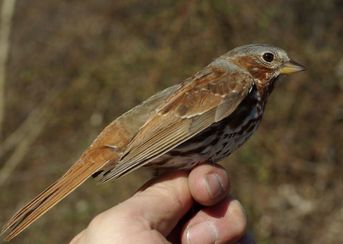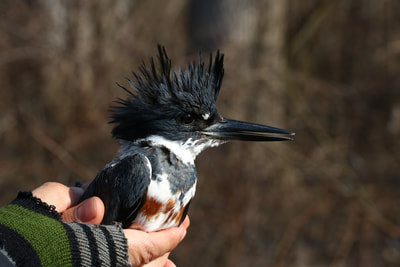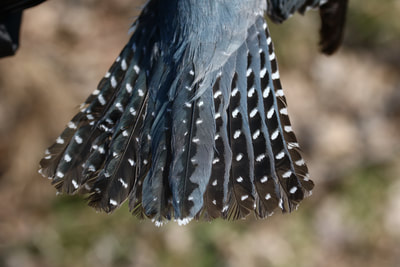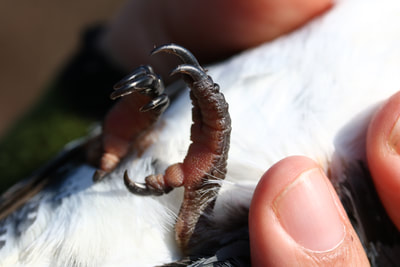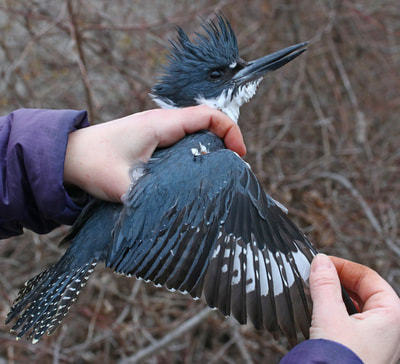Enjoying our blogs?Your support helps BSBO continue to develop and deliver educational content throughout the year.
|
|
It’s the beginning of a new migration season for Black Swamp Bird Observatory’s research team, and we are pumped more than ever to be back out in the marshes of Ottawa National Wildlife Refuge’s Navarre Marsh unit. Daily banding operations were commenced on April 9th, with our outstanding group of volunteers joining the team the following week. It has only been three weeks of banding, but we have already had a pretty interesting season. While the bulk of the data collected at the Navarre station is on neotropical migrants as they pass through the region, data from other short-distance or “winter” migrants is just as valuable and informative. Opening in early April offers us the opportunity to both monitor the movement of early short-distance migrants (such as Hermit Thrush and Myrtle “Yellow-rumped” Warbler) but also track the movements of “winter” migrants (such as Golden-crowned Kinglet, Brown Creeper, and Fox Sparrow). So far this season, we have seen our highest capture rate of Fox Sparrow ever (the station’s highest capture of FOSP in a season was about 40, and we have more than doubled that so far this season). Whether this is the result of a very successful breeding season last year, or was weather induced, is difficult to determine without corroborating data. But it is still a very interesting piece of data to have. Due to high precipitation and strong north-easterly winds this past winter, the marsh is pretty...well….marshy. Much of the station has higher than average water levels and muck boots are a requirement to reach some of the nets. But due to this high water level, we have doubled another species’ capture record (going from one ever caught, to two captured in a week): Belted Kingfisher. Kingfishers generally don’t enter the marsh too often, but with high water levels near the nets, we were perfectly poised to catch them as they darted through openings in the buttonbush. Unlike most other species of sexually dimorphic birds, female Belted Kingfishers are more colorful than males (showing rufous-rust streaks along the breast. Unfortunately, much remains unknown about the biology of Belted Kingfisher, with minimal research having been performed (maybe this is due in part to the difficulty of capturing them and their reclusive nature). Along with more BEKI, we are interested to see if these high water levels also bring in other “water” birds such as bittern, heron, sandpiper, and rail.
After an initial deluge of Fox Sparrow, Golden-crowned Kinglet, Brown Creeper, and Belted Kingfisher, the season has been relatively slow. With mostly north and easterly winds, migrants we would have expected to record in higher numbers last week (such as Ruby-crowned Kinglet, Myrtle “Yellow-rumped” Warbler, Western Palm Warbler, and White-throated Sparrow) have only just started arriving in notable numbers this past Friday (which saw southerly winds overnight). This new influx quickly saw the departure of other early migrant species that had been abundant only a week before (FOSP, GCKI, and BRCR). We still have yet to record other typical late April migrants so far this season (such as Black-and-white Warbler and Black-throated Green Warbler), but with southwest winds and warmer temps beginning next week, we are expecting a good movement of first-wave birds and many of the migrants we haven’t seen since last fall.
0 Comments
Your comment will be posted after it is approved.
Leave a Reply. |
AuthorsRyan Jacob, Ashli Gorbet, Mark Shieldcastle ABOUT THE
|
